Word Count: 3100
16 MINUTE READ
The amazing architecture of Telangana dates back to over 2000 years, generally around the 10th to 12th century. During that time, Telangana was under the reign of the Chalukyas and Kakatiyas. The state of Telangana covers the Deccan Plateau of India, bordering the coastal plains of the state of Andhra Pradesh. Telangana has produced regional variants of broader styles of architecture of India, both in Hindu temple architecture style as well in Indo-Islamic architecture style.
The art and architecture of Telangana reached their peak, during the reign of Chalukyas of Badami, and the Kakatiya dynasty. Architectural marvels were built during their rule, like the Thousand Pillar Temple, Alampur Temple, Ramappa Temple, and many other temples. The Nizams and Mughals aided in the construction of forts like Warangal fort, Bhongir fort, etc. Golconda fort shows the excellence of the artistic beauty of the Mughal reign.
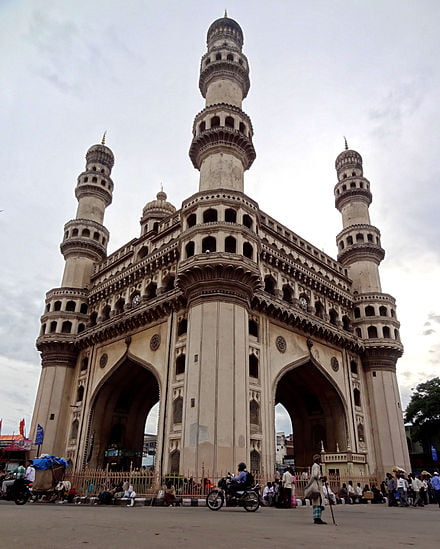
Various Phases of Architecture of Telangana
Buddhist Architecture
Located on the edge of the coastal plain, the Nelakondapalli stupa is a construction of the Buddhist period. In the recent decade, ASI has found the remains of a typical monastic complex, which is expected to have been alive until the 6th century AD, along with few artworks.

Hindu Architecture
The Badami Chalukyas built the Navabrahma Temples at Alampur in the 7th century, and the Kakatiya dynasty constructed the Warangal fort, Ramappa Temple, Kota Gullu, and Thousand Pillar Temple.
Indo-Islamic Architecture
Golconda Sultanate
Similar to the architecture of Deccan Sultanates, this Indo-Islamic style is unique to the states of Andhra Pradesh, Telangana, Karnataka, and Maharashtra. The earliest examples of the Golconda Sultanate are the ruins of the Golconda Fort. This sultanate built elaborate mosques and tombs using mortared stone.
The centerpiece of Hyderabad, Charminar, standing at the confluence of the four roads, is the mosque built in the 16th century, with four minarets (56m high) at the four corners, minutely decorated with stucco work. Several historic bazaars that are still alive, were constructed on the north street of Charminar towards the fort. The Charminar is a square structure with 20m long sides and four grand arches each facing the roads. Char Kaman, a public square enclosed by four giant arches, is constructed to the north of the Charminar. A fountain is also at the center of this area named, Gulzar Houz.
The Qutb Shahi tomb of Hyderabad includes the tombs of the sultans, royal men, and other important nobles. Some other examples of Golconda architecture include Khairtabad Mosque, Toli Mosque, and Taramati Baradari.
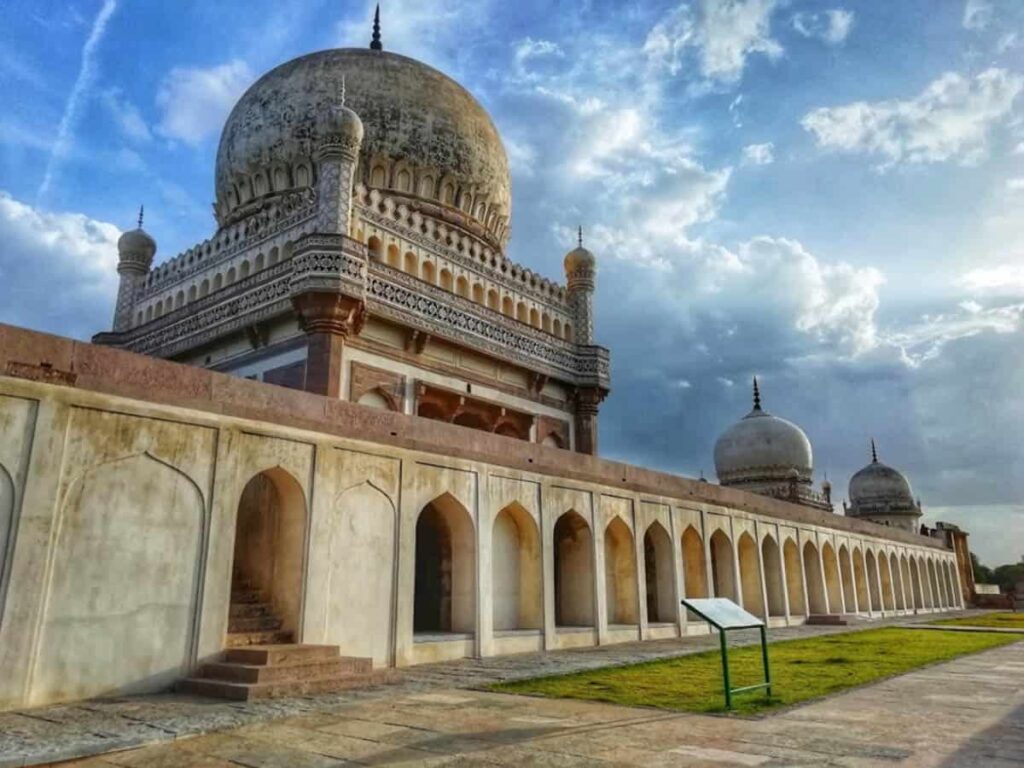
Colonial Architecture
The Nizams of Hyderabad ruled Telangana during the British colonial period. The Chowmahalla Palace is one such example showcasing the wide range of Indian and European styles built by the Nizams.
Neoclassical
Examples of neoclassical architecture include the British Residency and the Falaknuma Palace of Hyderabad.
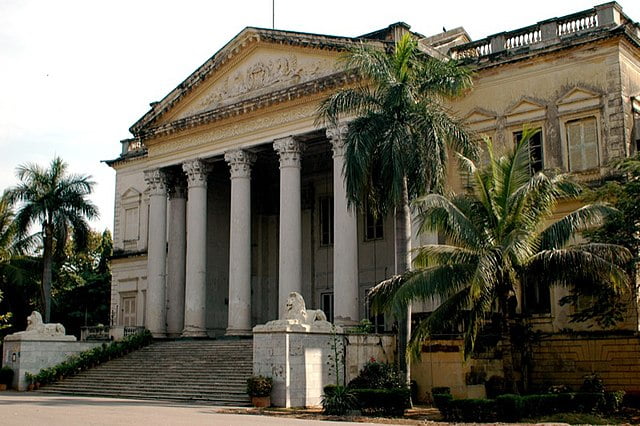
Art Deco
Examples of art deco style include the Mondo Market and the SBH Building.
Indo-Saracenic
Designed by British Architect Vincent Esch, the High Court, Osmania General Hospital, City College, and the Kacheguda Railway Station of Hyderabad, are some of the marvelous examples of Indo-Saracenic architecture style. Though not designed by Esch, Moazzam Jahi Market is a clear inspiration from Esch’s design.
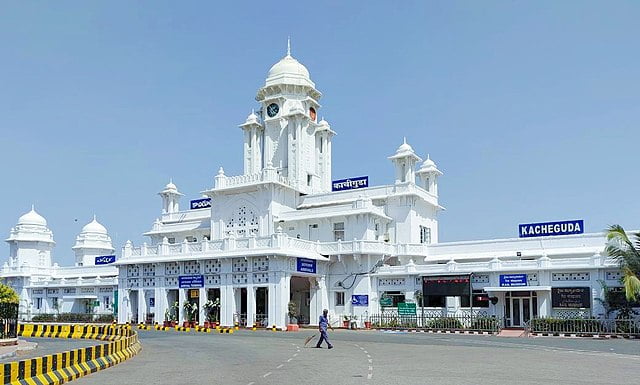
Post-Independence
Designed by Sir Christopher Benninger, IIT Hyderabad is an example of a contemporary architecture style. Some other buildings of the contemporary style include HITEC City and its surrounding neighborhoods of Hyderabad.
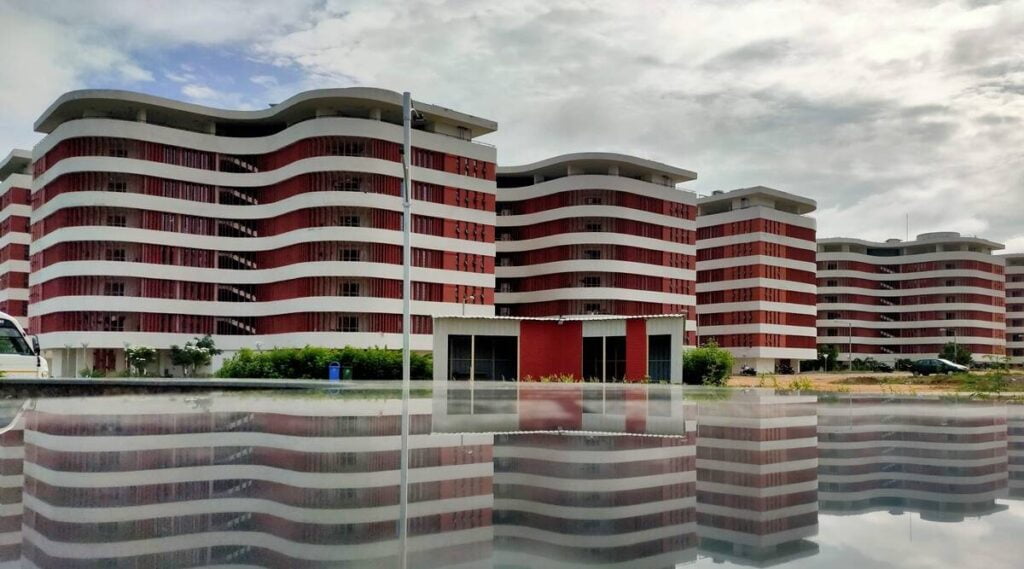
Architecture Of Hyderabad
The historic buildings of Hyderabad, have a clear reflection of Indo-Islamic style with local contributions, which makes it the first and the “Best Heritage City of India” as of March 2012. The city of Hyderabad houses several famous historic sites including various mosques and palaces, built by Qutb Shahi and Asaf Jahi. Not only Islamic but Hindu temple architecture can also be seen in Hyderabad including, the Birla Mandir, Akanna Madanna Temple, and Jagannath Temple. Post-independence buildings are major examples of modern architecture in the city.
The Various Phases of Architecture of Hyderabad
Golconda Sultanate (1591–1687 CE)
During the 16th and 17th centuries, the Qutb Shahi reign emerged, and its architecture followed the Persian architecture featuring colossal arches and domes. The buildings of this reign are found to have Persian inscriptions and elaborately carved stucco works. The ruins of the Golconda Fort (built in the 16th century) are the oldest alive Qutb Shahi architecture in Hyderabad.
The Charminar and the Mecca Masjid being among the most important monuments of that time were both built by Mohammed Quli Qutb Shah (the founder of Hyderabad). The Qutb Shahi Tomb complex was also built during this time. The domes of the tombs were overlaid with green and blue tiles, of which only a few remain today. The tomb is set in a beautiful garden, and the complex includes a Turkish Bath, Step Well, and a Mosque.
All of these monuments, the Charminar, the Mecca Masjid, and the Qutb Shahi Tomb Complex, are included in the list of monuments of National Importance in India, and in 2010, they were proposed to be listed as UNESCO World Heritage Sites.
The Golconda Style of architecture is also seen in Musheerabad Masjid, Taramati Baradari, Shaikpet Sarai, Khairtabad Mosque, and Toli Masjid.

Mughal period (1687–1724 CE)
Constructed in granite in typical Mughal defense architecture, the city wall of Hyderabad is a significant architectural contribution to Mughal architecture. The city wall had 12 gates, each wide enough for an elephant to pass through.
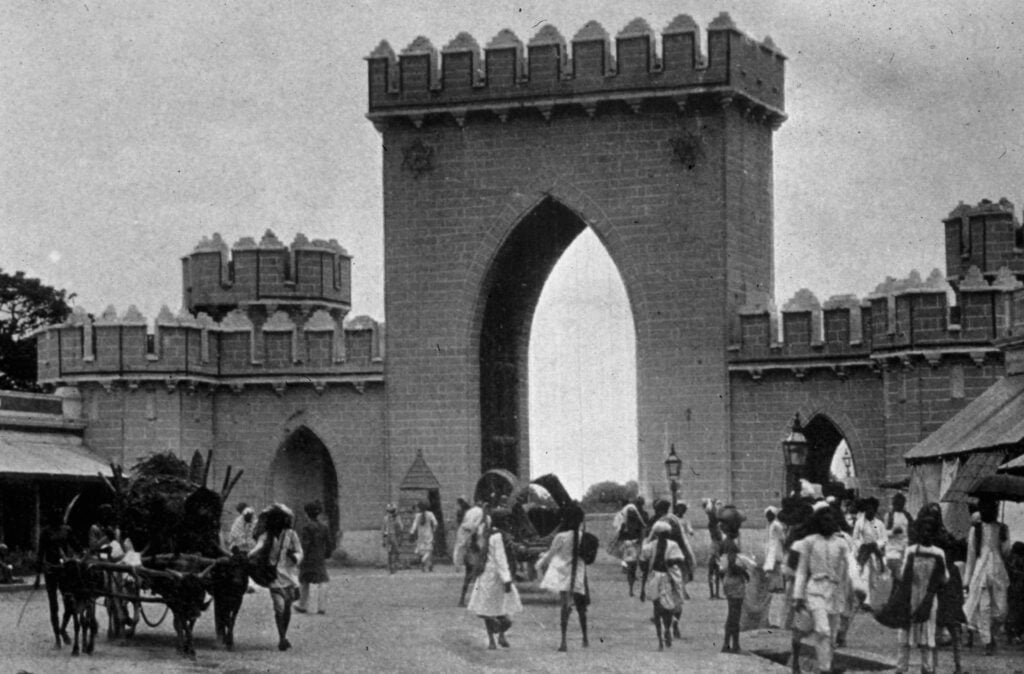
Nizams of Hyderabad (1724-1948 CE)
As the vassals of the British Empire, the Nizams ruled between the 18th and 20th centuries in Hyderabad, thus prevailing the European architectural styles during this time. Nizam’s palaces, palaces of noble families, and mansions in Indo-European styles were built under the Nizams. Some of the palaces include Asman Garh Palace, Khursheed Jah Devdi, Diwan Devdi, Errum Manzil, Bella Vista, Bashir Bagh Palace, Hill Fort Palace, and, Paigah Palace. Some churches including the St. Joseph’s Cathedral, CSI Garrison Wesley Church, St. George’s Church, and Holy Trinity Chuch, were also built in and around Secunderabad, the new city built as a British cantonment.

Neoclassical
Completed in 1798, the British Residency, was among the first examples of the neoclassical architecture style of Hyderabad. The guest house, the Falaknuma Palace, was built by the Nizams taking inspiration from Andreo Palladio’s villas. King Kothi palace was also built by the Nizams in the European style of architecture.

Indo-Saracenic
During the 17th century, the secular style of construction was outweighed by the palatial style of Asaf Jahi architecture. Purani Haveli, which served as the seat of the Nizam (until the construction of Chowmahalla Palace), is an example of Asaf Jahi architecture.
The Chowmahalla Palace took about 100 years its construct, and a range of Indian and European styles ranging from neoclassical to baroque can be seen in this palace.
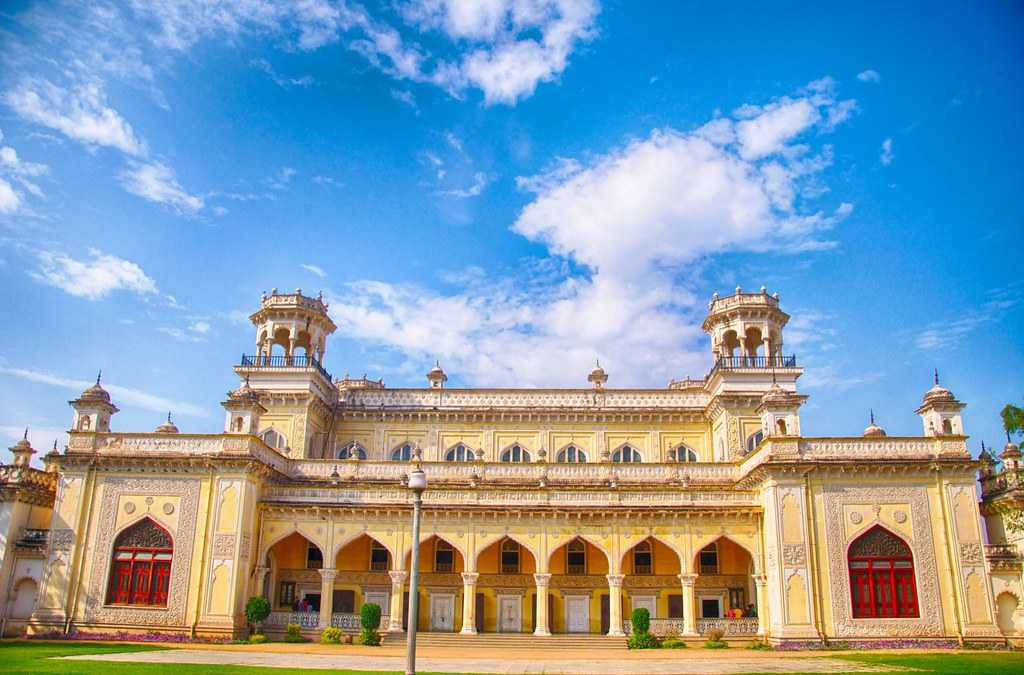
The buildings constructed during the reign of Nizam Mir Osman Ali Khan (also known as the maker of modern Hyderabad), are impressive and reflect a rich Indo-Saracenic style of architecture. The architecture of this time is quite distinct from the Qutb Shahi architecture counterpart. Some of the examples of the buildings of his reign include Moazzam Jahi Market and Osmania University.
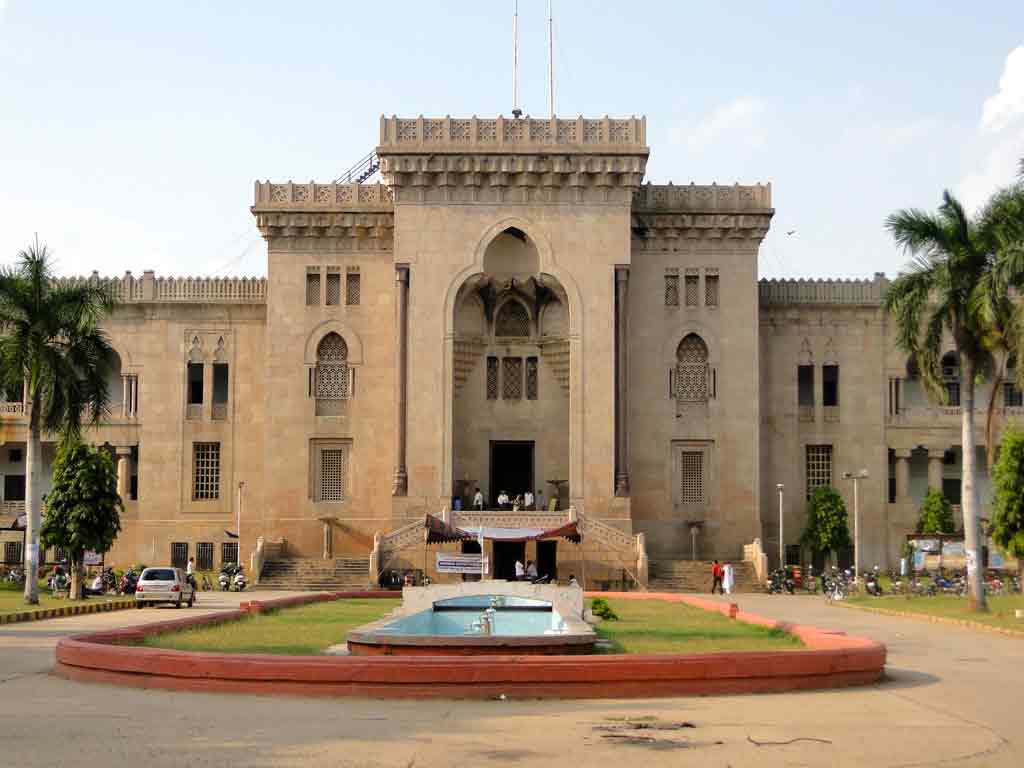
During the 20th century, the British architect Vincent Esch, invited by the Nizams, built the four main public structures of the state in the Indo-Saracenic architecture style, combining the Indo-Islamic and European styles of architecture – the Hyderabad High Court, City College, Osmania General Hospital and the Kacheguda Railway Station.
Some other buildings which contribute to the architecture of the 20th century include Paigah Tombs, the Spanish Mosque, Mahbub Mansion, Aza Khana-e-Zohra, Saidani Ma Tomb, Hill Fort Palace, and Nizamia Hospital.
Art Deco
During the 1930s and 1940s, the art deco style took its peak. Some examples of art deco are the Monda Market, SBH Building in Hyderabad, and several cinema halls.
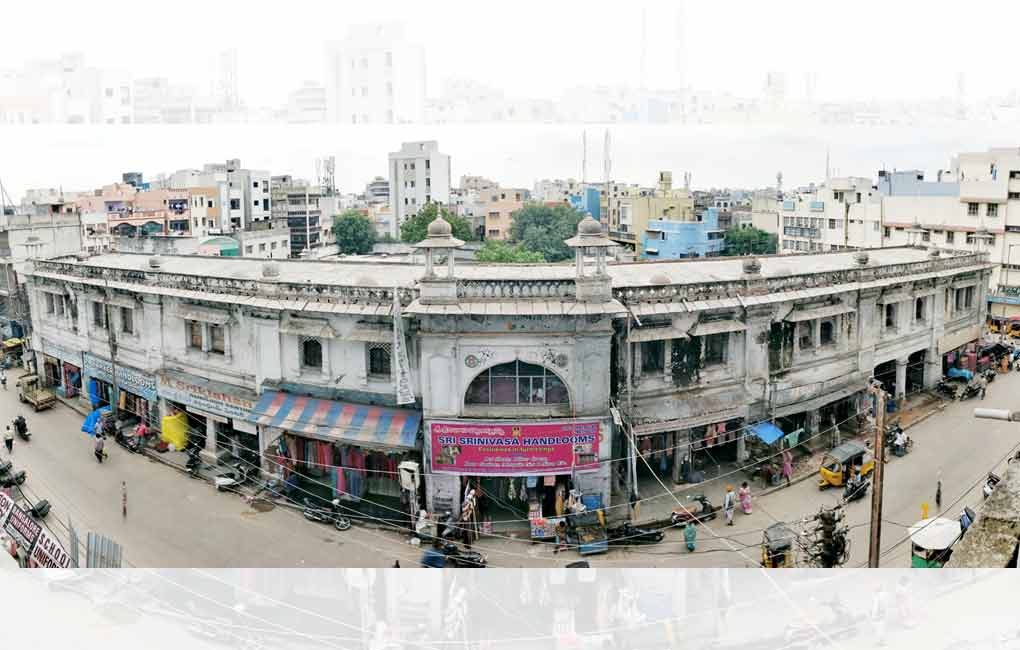
Post-Independence (1947 CE – present)
The newer areas of the city were dominated by the modern style of architecture.
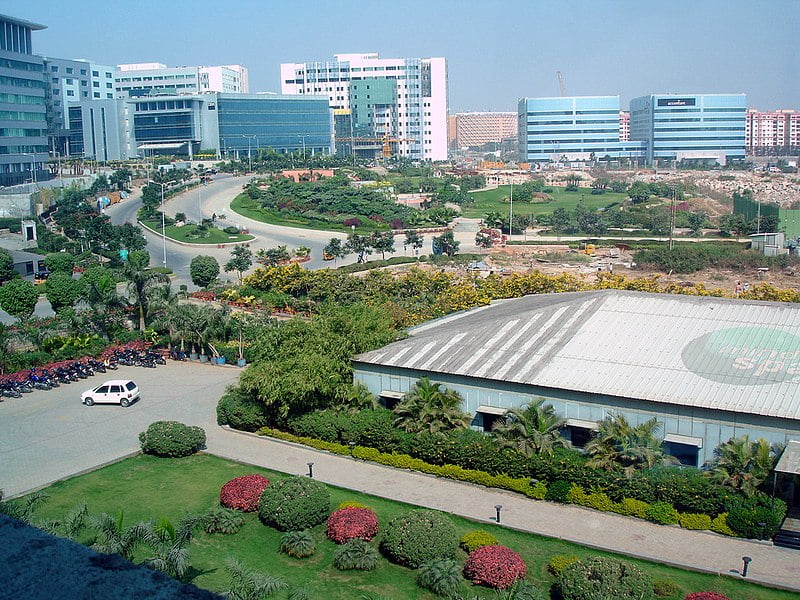
Architectural Marvels of Telangana
Thousand Pillar Temple, Warangal
The carved pillars of a thousand-pillar temple are an architectural marvel of the Kakatiya style of architecture. This temple is believed to be built by Emperor Rudra Deva in 1163 AD. This masterpiece was destroyed by the Tughlaq dynasty during their South India invasion. The temple complex includes one temple and a few other buildings. There are one thousand elaborately carved pillars in the temple and the building, but no pillar at any point obstructs any person in the temple to see the deity in the other temple. Each pillar is intricately carved with motifs, perforated screens, and other scriptures that show the charm of that era. The Thousand Pillar Temple is also listed in the UNESCO World Heritage Site.
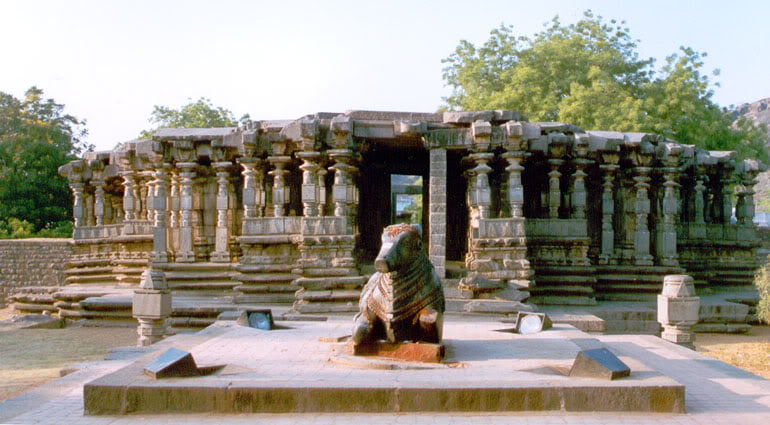
Temples of Alampur
The temple complex of Alampur is a rich example of the architecture of Chalukyas, built during the 7th century AD. This Alampur Navabhrama temple complex has in total of nine temples in it, all of them dedicated to Lord Shiva. The temple stands still reflecting the rich architectural heritage of the Badami Chalukyas. The temples have a beautiful blend of Northern and Western Indian styles of architecture. These temples do not show the Dravidian style of architecture unlike the temples of this region. The temple shikhara has a curvilinear form, decorated with minute architectural features. The plans and the adornment are similar to the rock-cut temples.
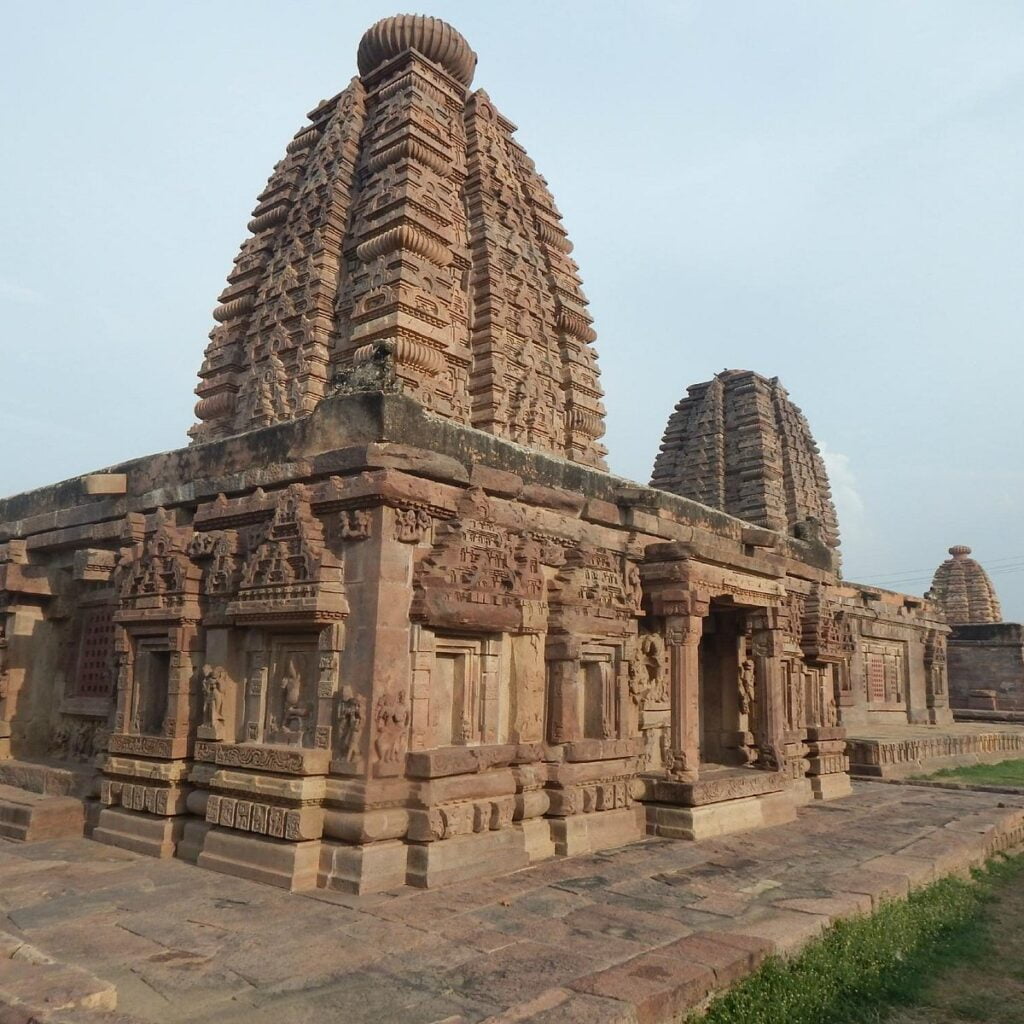
Warangal Fort
The Warangal fort is believed to have been built during the latter half of the Kakatiya dynasty during the 13th century CE. Built during the time of Rudramadevi and Prataparudra, the fort had several gateways, square bastions, and many circular earthen walls before the demise of Prataparudra in 1323. The fort has four ornamental gates in it, which are also known as ‘Kakatiya Kala Thoranam’. These gates originally formed the entrance to the now ruined great Shiva Temple. The Warangal Fort is built in three concentric circular defensive walls. The stones used were not of regular shapes but still were fitted devoid of any mortar.
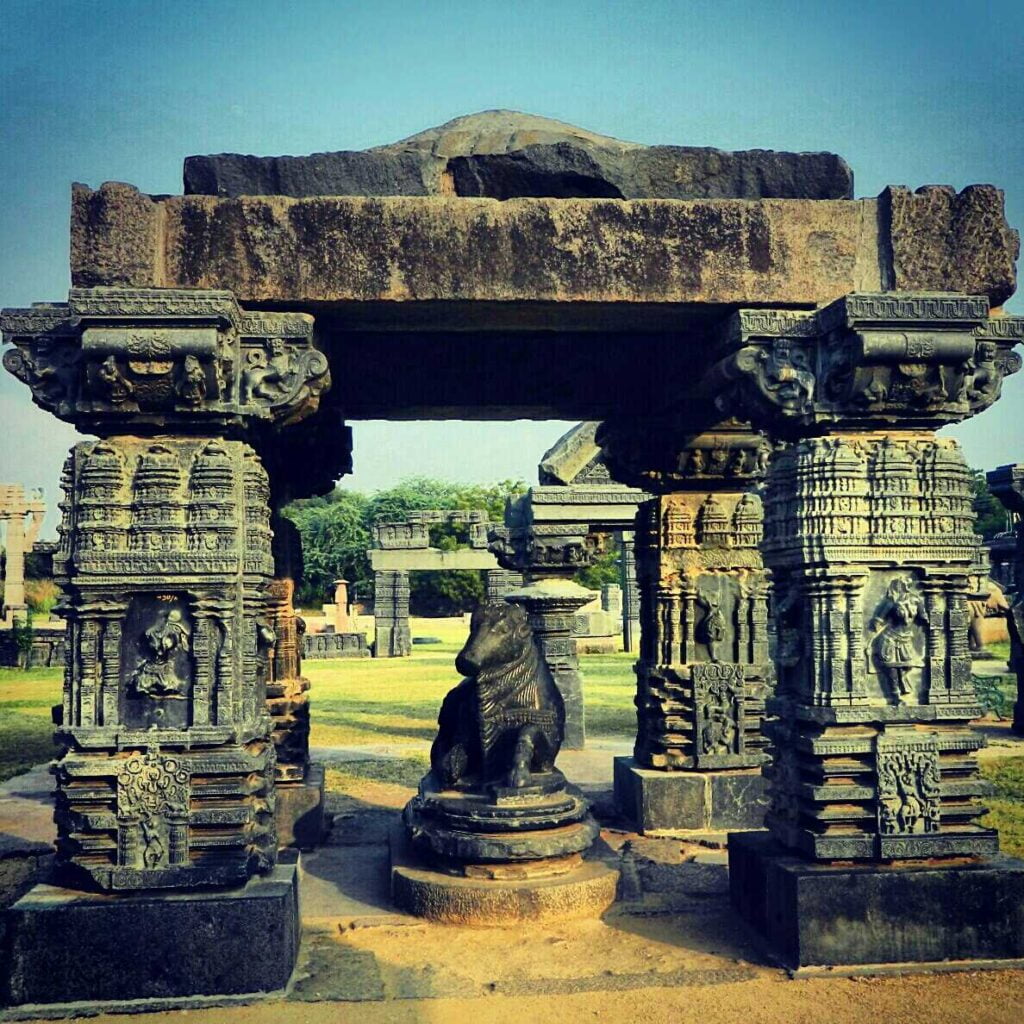
Salar Jung Museum, Darushifa
This museum is the carrier of the Nizam arts. The museum collection is sourced from the property of the Salar Jung family. This museum is the third largest in India, housing the richest one-man collections of antiques in the world.
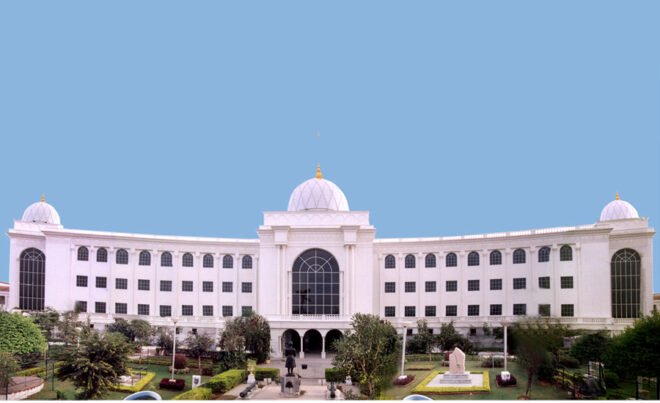
Chilkur Balaji Temple
Chilkur or Visa Balaji Temple has situated 25km from Hyderabad and is one of the most dominant temples in the state. There are several stories associated with this temple, one of the most popular beings is that anyone who wishes in the temple, their wish gets fulfilled after 11 successful Pradakshanas.
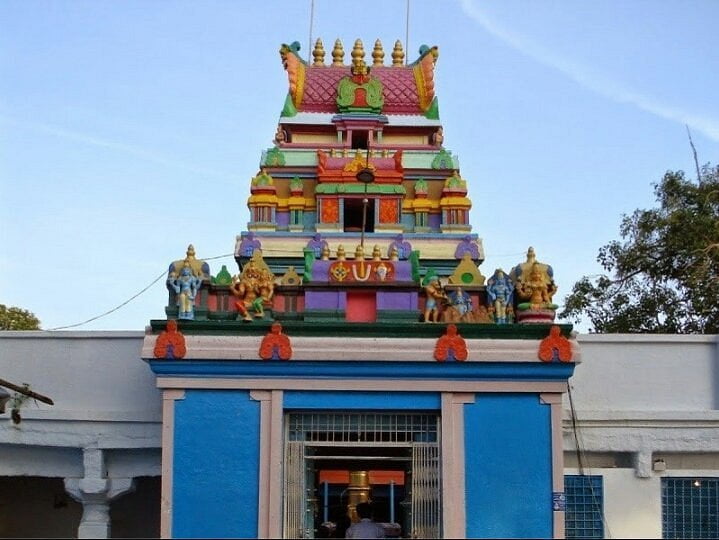
Hyderabad Birla Mandir
Hyderabad Birla Mandir is one of the most significant temples of the state with devotees flocking here all around the year. The temple has its legacy with intricately carved white marbles. The temple is spread over an area of 13 acres and is named after the Birla Foundation. ‘Lord Venkateshwara’ is the presiding deity of this temple. One can get an amazing view of Hussain Sagar Lake from this temple.
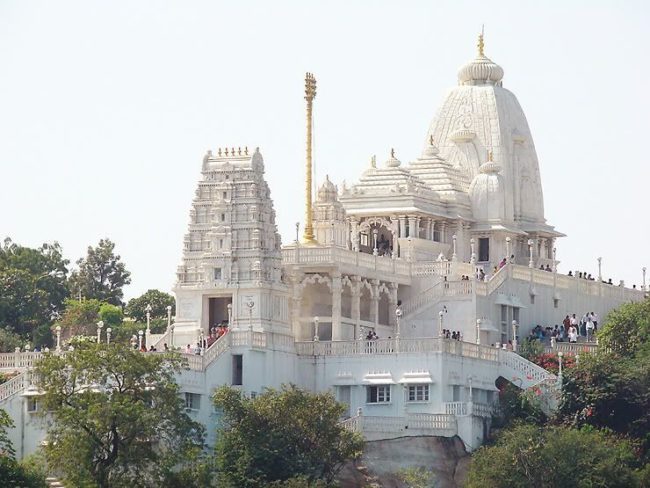
Gnana Saraswathi Temple, Basar
This temple is famous for being the second most popular temple of Goddess Saraswati. Apart from being the most beautiful temple in the state, this temple also has religious significance with devotees flocking here all the year. The temple represents the holy trinity of Goddess Sarawati, Laxmi, and Kali. According to Hindu Mythology, Goddess Sarawati is believed to be the ‘Goddess of Learning’, so children are brought here for ‘Akshara Abhyasam’, i.e., initiating their first learning in writing.
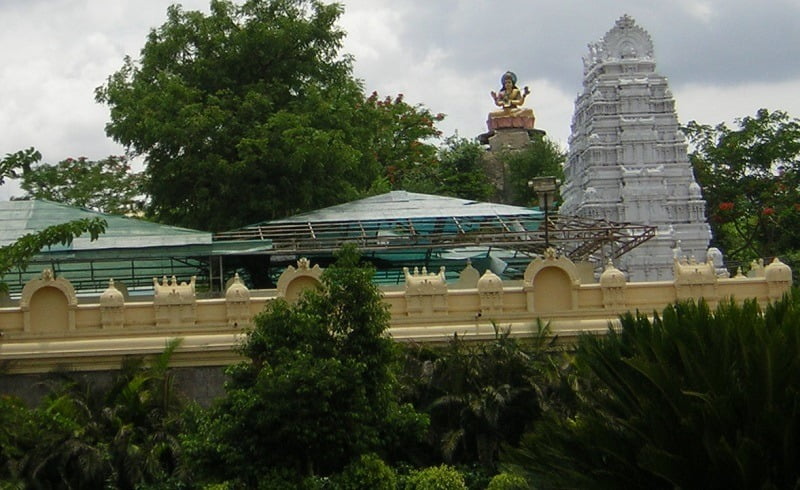
Sanghi Temple
This temple is located atop the hill named ‘Paramanand Giri’, which is about 30km away from Hyderabad. The temple is situated amidst the serene surrounding. The presiding deity here is Lord Venkateshwara. The idol of the deity is believed to be a replica of one located in the Tirumala Hills.

Bhadrachalam Temple
Located on the banks of the Godavari River, this temple is of great importance to the devotees. The locals say, ‘Swayambhu’, i.e., the idol inside the temple is self-manifested. This temple is considered of immense importance and is often referred to as ‘Dakshina Ayodhya’. The temple is believed to be built around the 17th century. The presiding deity is Lord Bhadrachalam or Lord Rama or Lord Vaikuntha Rama, which is not present anywhere in the country.

Surendrapuri Temple
The Surendrapuri temple offers a mythological theme park for the devotees to admire. The temple is one of the most important temples of the state, with the esoteric depiction of culture, art, and amazing sculptures. The temple is also famous for its 101 feet Shiva Linga, which is termed the Nagakoti. This temple also houses the idols of Lord Hanuman and Lord Venkateshwara.
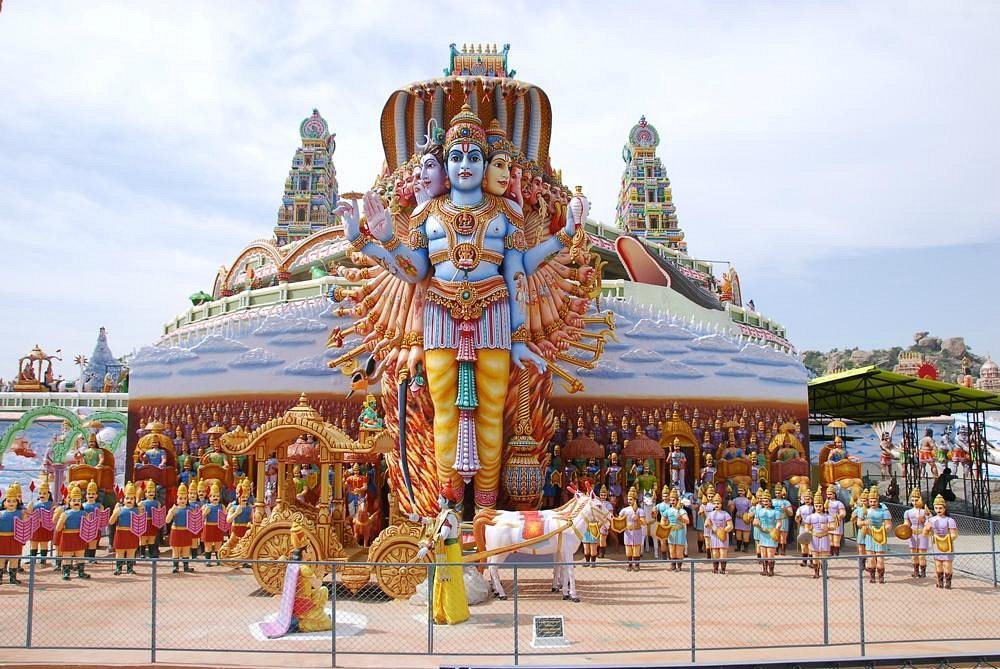
Karmanghat Hanuman Temple
This is one of the oldest temples of the state being built around the 11th century AD. The temple boasts amazing architecture and is famous for curing life-threatening diseases.
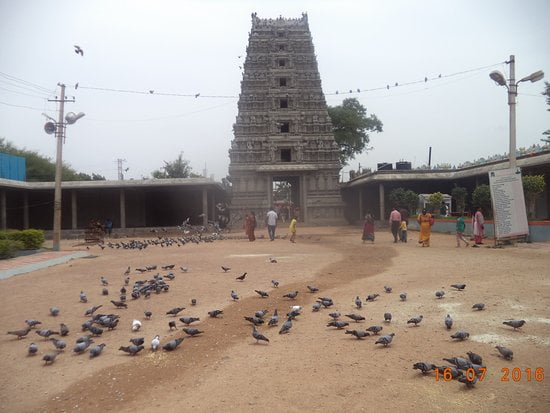
Beechupally Anjaneya Swamy Temple, Mahbubnagar
Home to Anjaneya Swamy or Lord Hanuman, this temple is known to have been surviving for the past 200 years. Situated along the banks of the Krishna River, this temple is also known to have Shiva Linga. During the monsoon, the river touches the edge of the temple, which gives a spectacular view of the temple.
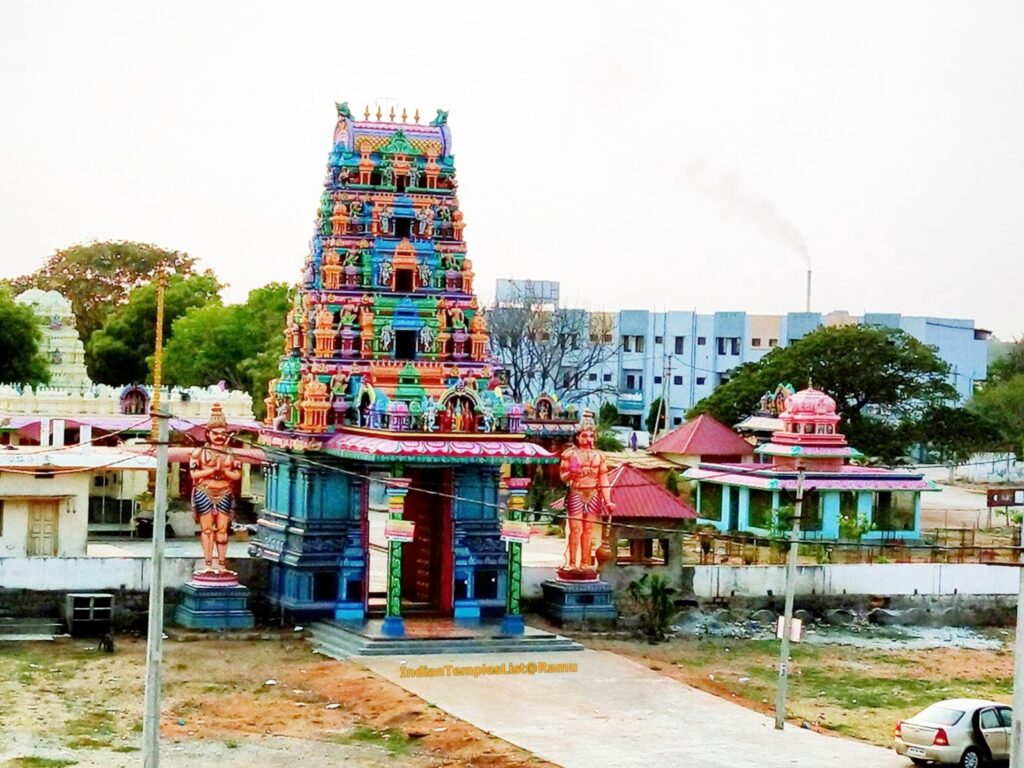
Lakshmi Narasimha Temple, Yadadri Bhuvanagiri
This temple is famous for being the abode of Lord Narasimha, attracting devotees from all around the world. The temple is located inside a cave, where several chambers make it a great experience to take a tour inside the cave to see the sculptures inside.
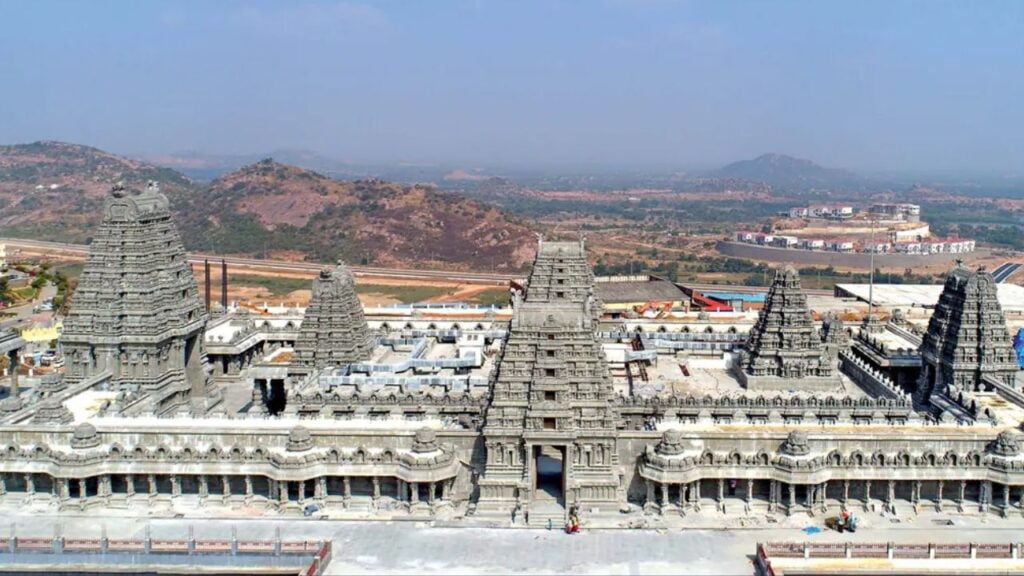
Bhadrakali Temple, Warangal
The Bhadrakali temple was built by the Chalukya dynasty around 625 AD. The stone statue of Goddess Bhadrakali is an architectural marvel. As per the studies, the temple was looted by Allaudin Khilji and was rebuilt around 1950.
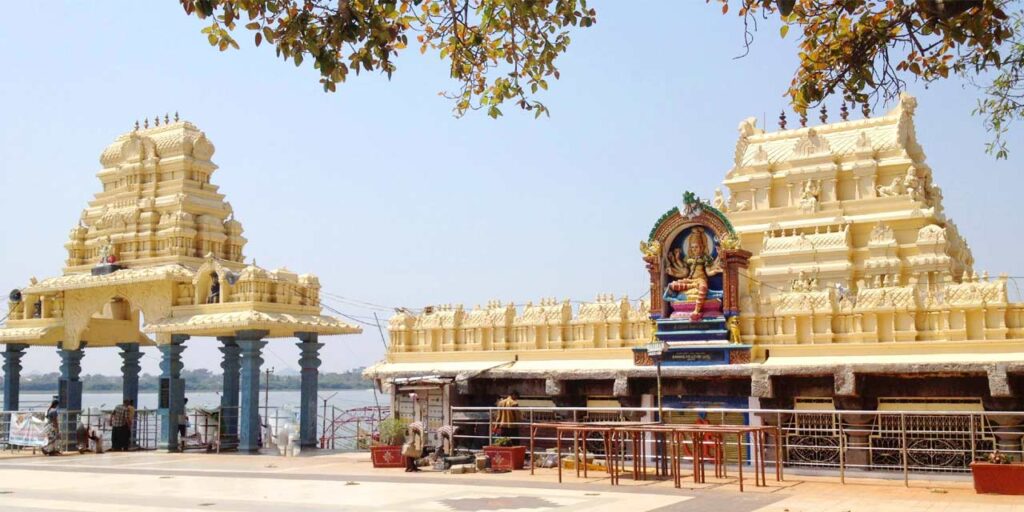
Keesaragutta Temple, Medchal-Malkajgiri
The Keesaragutta temple is known for being located at a small knoll, devoted to Lord Shiva. Thousand of devotees gather from different corners of the country during the holy night of Shivaratri. The temple possesses a rich heritage with it. The idols of Lord Shiva that were dug out from these temple steps are believed to be from around the 4th and 5th centuries.
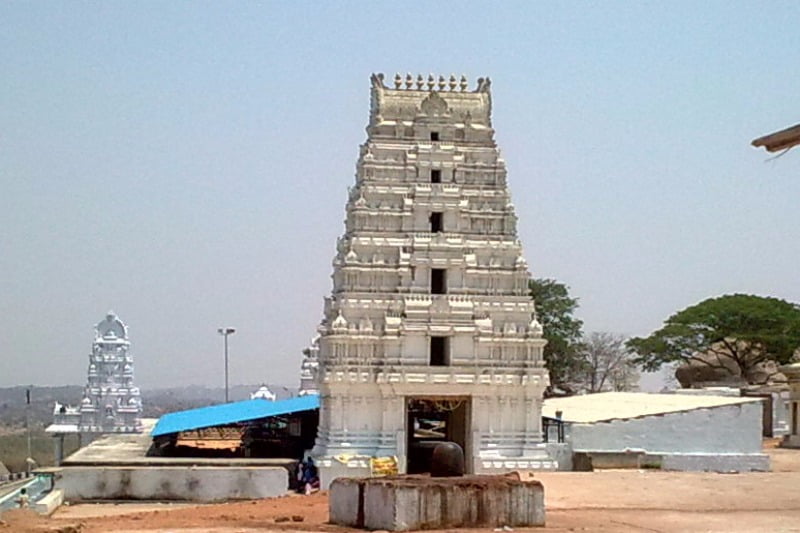
Ramappa Temple, Palampet
The temple is named after its creator. The presiding deity is Lord Shiva. The temple structure is standing on a 1.8m high star-shaped platform and the pillars of the temple have sumptuous carvings. Also known as ‘Rudreshwara Temple’, is built in the Kakatiya style of Hindu Temple architecture. The temple is located in the vicinity of Ramappa Lake. The temple complex houses three temples that were constructed between 1212 and 1234. During his visit to the Kakatiya dynasty, Marco Polo called this temple the ‘brightest star in the galaxy of temples’. The temple structure is built in reddish sandstone, while the pillars around the temple have large brackets of black basalt, which is rich in magnesium, iron, and silica. In 2021, the temple complex has also been listed as a UNESCO World Heritage Site.
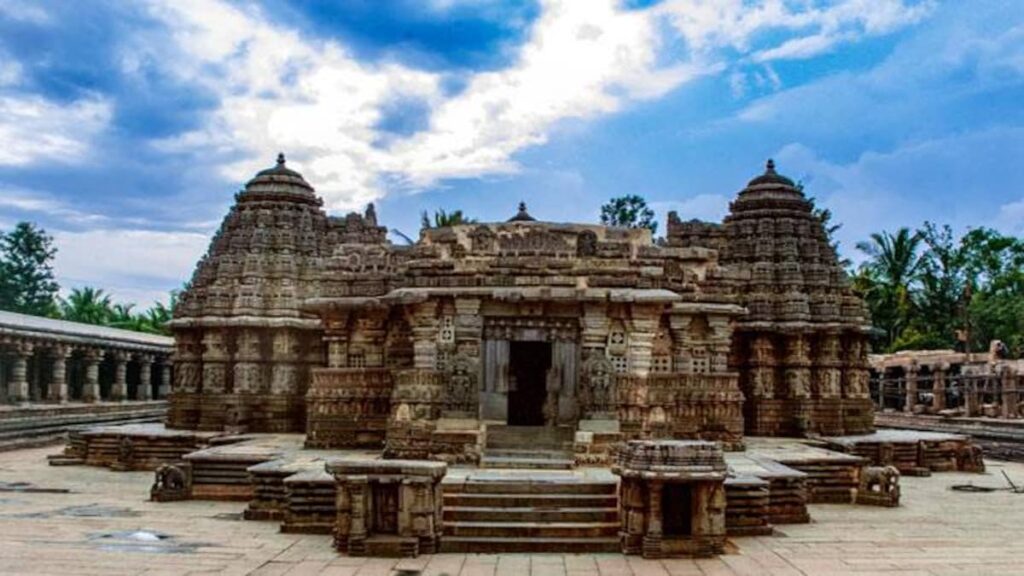
Kichanapalle Stepwell, Medak
This stepwell is recently constructed by a group of architects. The stepwell is surrounded by lush greenery but is in a poor condition due to negligence. It is believed to have well-defined pavilions in it.
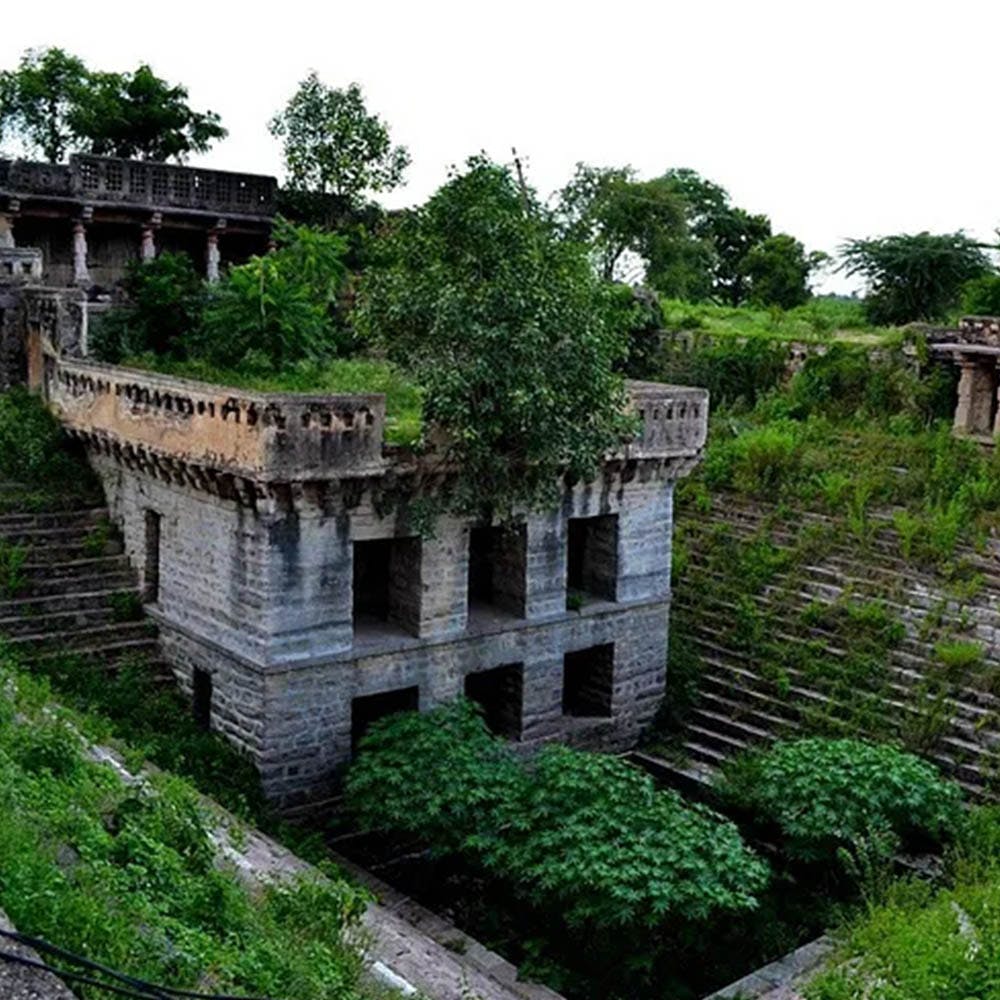
Chowmahalla Palace, Hyderabad
This palace is inspired by the Shah of Iran’s palace in Tehran. Chowmahalla, meaning four palaces, is believed to have a perfect blend of Persian, Europe, Rajasthan, and Indo-Saracenic styles of architecture. The palace was built by Nizam Salabat Jung, and it is a property of Nizams to date. The palace is awarded UNESCO Asia Pacific Merit Award for Cultural Heritage Conservation. Built-in neoclassical style of architecture, the palace has four parts – Afzal Mahal, Mahtab Mahal, Tahniyat Mahal, and Aftab Mahal. It has Mughal domes and arches along with Persian architectural features like ornate stucco work.
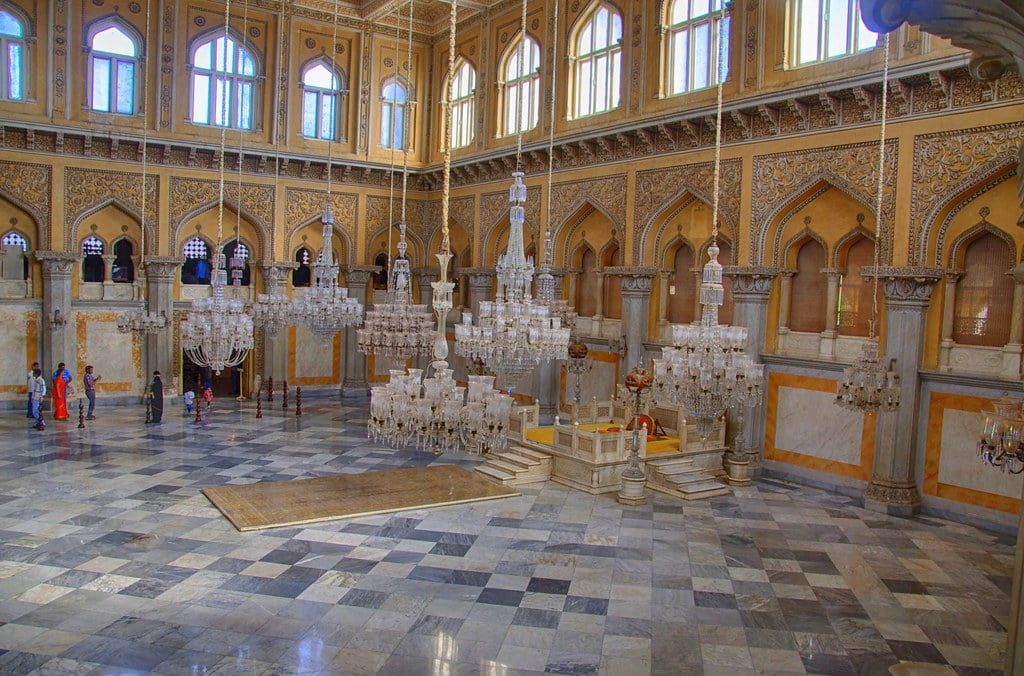
Nirmal Fort, Adilabad
Nirmal fort is also known as the ‘city of forts’. It is believed that a firm French establishment in this town paved the way for Nirmal Fort or Shamgarh Fort. The fort provides a scenic view from its top during the sunsets.
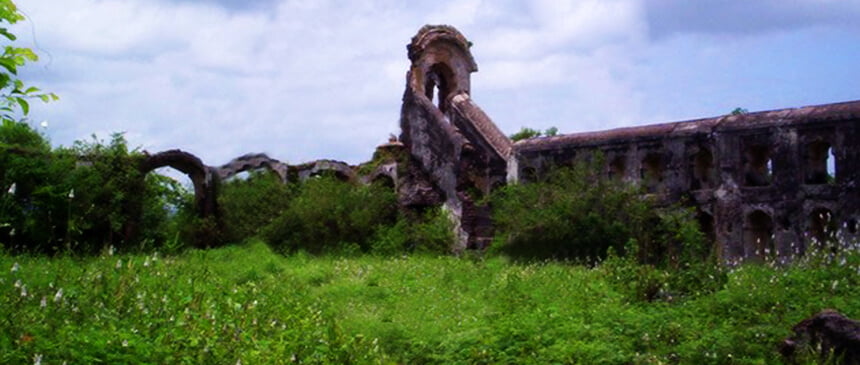
Nagunur Fort, Vemulawada
The Nagunur fort was built by the Kakatiyas. The fort is having a huge water tank inside and a beautiful Shiva Temple. The artwork of musicians playing instruments is carved in the beams of the temple. The fort is believed to have around 400 temples in it earlier.

Devarakonda Fort, Nalgonda
This fort is an architectural marvel situated in a small village of Devarakonda, built by the Velama Kings during the 14th century. Being surrounded by a series of seven hills, large boulders, and forest, the fort gets a stunning view. Due to the negligence and lack of maintenance, the fort is losing its charm.
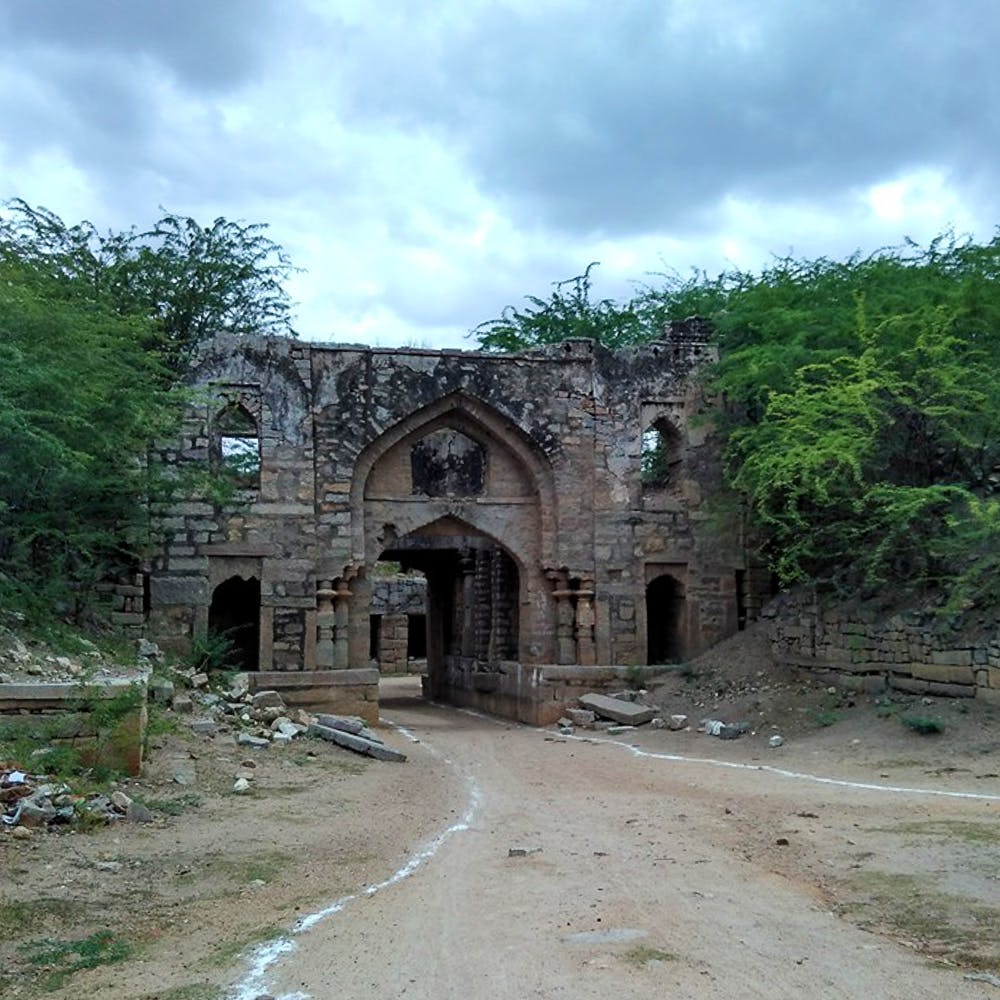
Jamia Masjid, Hyderabad
Jama Masjid is popularly known as Spanish Mosque due to its beautiful architecture. It was built by Viqar-Ul-Umra in 1906. Viqar-Ul-Umra also built the Falaknuma Palace. Jama Masjid shows a beautiful blend of Moroccan and European features of the architecture. This mosque is believed to have the graves of the Paigah family and can accommodate around 2000 people.
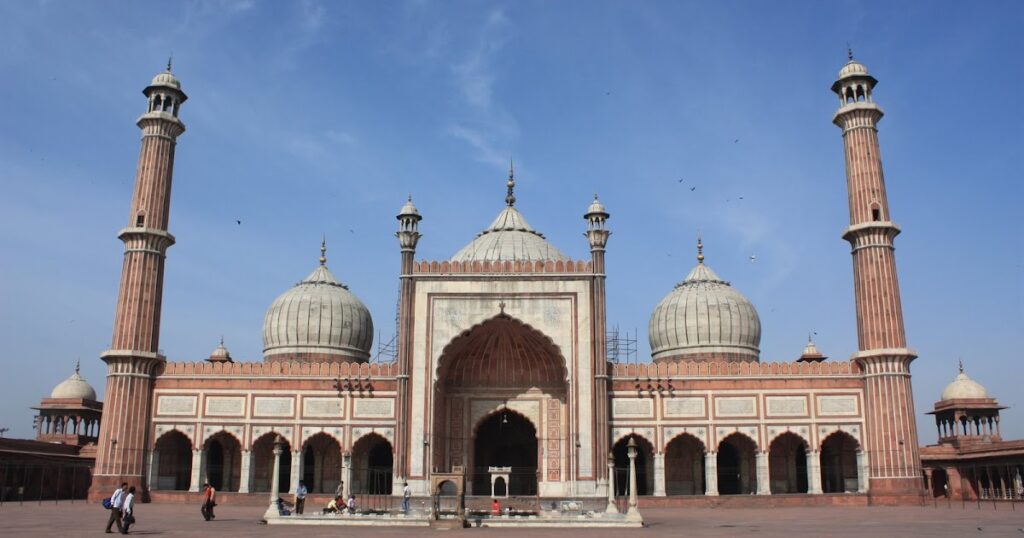
Traditional Dwellings of Telangana
The south-Indian part can be divided into three main parts to discuss their traditional dwelling styles – Rayalseema, coastal Andhra, and Telangana. The Rayalseema being part of the Deccan plateau is famous for its black slate stones, which are often used for flooring, roofing, and shelving. The Telangana part includes majorly Hyderabad and the Secunderabad, which were influenced by the Islamic architecture and the rule of Nizams for a long period.
The feature of an open courtyard is common in these regions. Also, the houses have a large hall stretching across the house. The traditional dwelling shows an amazing blend of Muslim architecture along with the local features, probably due to the influence of the reign of the rulers. The use of arches, black slate stone, carved screens, and even Urdu calligraphy are common in these houses.
Coastal Andhra House
The coastal Andhra House is also known as ‘Chuttillu’, meaning a roundhouse. The cob wall technique is used to build the walls. The houses are built in circular clusters which help to reduce the effects of cyclones in the coastal regions and prevent much damage. The use of teakwood, red bricks, and detailed decorated entrances are the main feature of these houses.
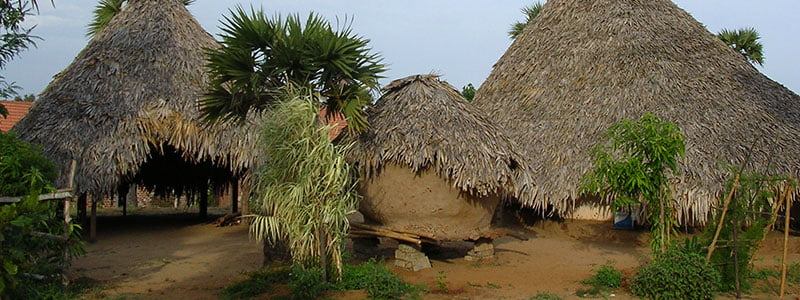
Manduva Logili House
The Manduva Logili houses are found mainly in the districts of Guntur, Godavari, and Nellore. These houses are characterized by rooms being arranged either around an inner courtyard, or a large hall running through the length of the home. The houses are decorated with rose or teakwood pillars, built in red bricks.
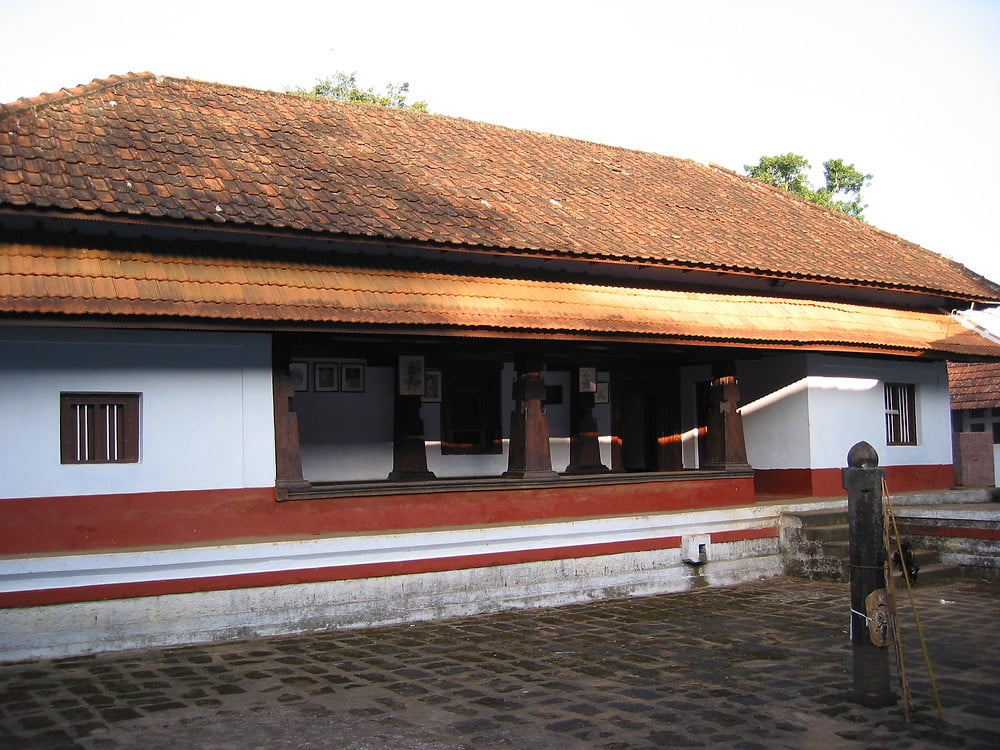
Tips to Decorate Your Home in South Indian Style
- Use wooden furniture.
- Decorate the walls with paintings.
- Use detailed and ornamental doors.
- Try to have a specific puja room.
- Use ‘bharanis’ or big jars as a décor item, or to keep items like pickles preserved.
- Use brass décor items like lamps, bowls, mirrors, candle stands, etc.
- Have ‘oonjals’ or swings in your living room.
- Use ‘nilavillaku’ or lamps as décor items.
- Have hand-painted tiles on your floor.
- Have pillars to give a grand look to your house.
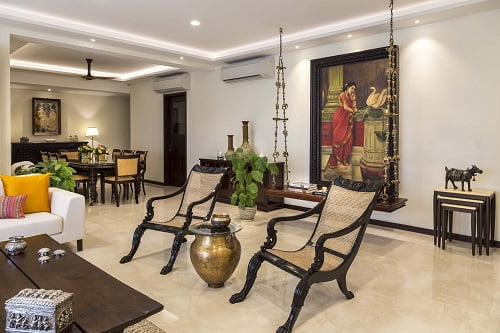
Concluding Words!
The architecture of Telangana shows a perfect blend of ancient and modern architecture, starting from the Chalukyas to Nizams to Modern architecture, Telangana has it all. It is beautiful to experience such a wonderful combination of history in a single place. One can get to know a lot about the past and the making of the present just by having a detailed visit to this state of Telangana!!
Citations
- Wikipedia. (2022). Architecture of Telangana. [online] Available at: https://en.wikipedia.org/wiki/Architecture_of_Telangana#:~:text=The%20architecture%20of%20Telangana%20dates,architecture%20and%20Indo%2DIslamic%20architecture.
- Wikipedia. (2022). Architecture of Hyderabad. [online] Available at: https://en.wikipedia.org/wiki/Architecture_of_Hyderabad
- Indianetzone.com. (2014). Architecture of Telangana. [online] Available at: https://www.indianetzone.com/73/architecture_telangana.htm
- Sunaina. (n.d.). 7 Places To Explore In Telangana If You Love Architecture. [online] Available at: https://lbb.in/hyderabad/best-architecture-places-telangana/
- Maheshwari, Astha. (2022). 14 Temples In Telangana That Depict The Religious Side Of The City In 2022!. [online] Available at: https://traveltriangle.com/blog/temples-in-telangana/
- Vaidya, Malika. (2020). Traditional Indian Housing: South India. [online] Available at: https://www.architecturepulse.com/post/traditional-indian-housing-south-india#:~:text=Telangana%20includes%20Hyderabad%20and%20Secundarabad,dynasty%20for%20a%20long%20duration.&text=Known%20as%20Chuttillu%20which%20means,using%20the%20cob%20wall%20technique.
- Balasubramanian, Harini. (2022). South Indian house design: A look at the interior décor of traditional homes in south India. [online] Available at: https://housing.com/news/south-indian-traditional-house-decor/
![]()